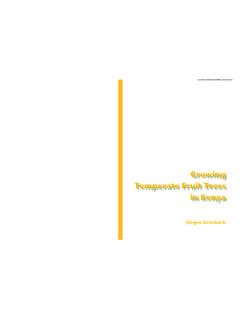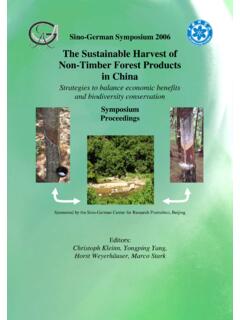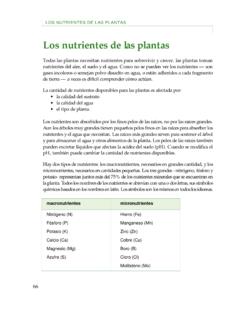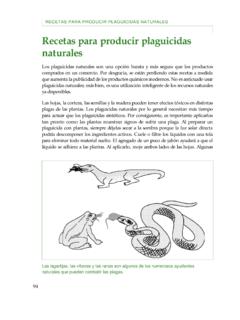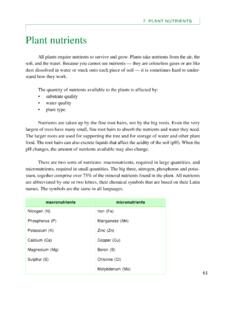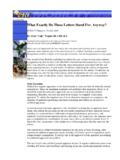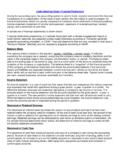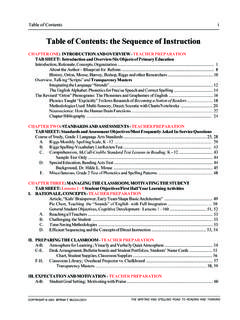Transcription of Natural pesticide recipes - World Agroforestry Centre
1 APPENDIX 2 Natural pesticide recipes . Natural pesticide recipes Natural pesticides are a cheap and safer alternative to products bought in a store. Unfortunately, these recipes are being lost as advertising to use modern chemicals increases. It is not old fashioned to use Natural pesticides rather it is a smart use of the Natural resources that are readily available! Leaves, bark, seeds and wood can have toxic effects on different plant pests. Natural pesticides usually take longer to work than synthetic pesticides . Thus, it is important to apply them as soon as the plants show evidence of pests. When preparing a pesticide from plants, always let them dry in the shade, because direct sunlight could break down the active ingredients. Strain or filter any liquid with a cloth to remove any loose material. Adding a little soap will help the liquid adhere to the plants. When applying, wet both sides of the leaves. Some substances can burn young plant tissue unless they are diluted.
2 Try first on a small patch before applying broadcast. Lizards, snakes, and frogs are among the many Natural helpers which can control pest problems. 89. APPENDIX 2 Natural pesticide recipes . Many Natural predators in the nursery help control pests. Insects such as spiders, dragonflies and ladybugs specialize in eating other insects. Before killing any insect or animal, first consider what it eats! CAUTION: Although these Natural products are generally not toxic to humans, they can cause serious injury if inhaled, ingested, or rubbed on the skin or in the eyes. Use the same safe practices as described for commercial pesticides . Insecticides. Insects are killed either by contact or by ingestion of the insecticides. Some insecticides only repel the insects by a strong odour. Neem (Azadirachta indica). A tree native to India and Pakistan, but planted widely around the World for its use as a Natural pesticide . In addition to being an insecticide, it has been used as a fungicide, nematicide and bactericide.
3 Commercial products made with neem include Bioneem, Margoan-O, Biotrol and Nimex. The active in- gredient in neem mimics an insect hormone and repels insects, as well as inhibiting their digestion, metamorphosis and reproduction. It has been used effectively on over 100 leaf-eating insects. To use neem, collect mature seeds, wash and remove the husk, and allow to dry completely. Take twelve handfuls of dry seeds (or use 500. grams per 10 litres water) and grind them into a fine powder. Mix the powder in 12. litres of water and soak overnight. Strain the liquid and apply. Anona y guan bana, custard apple and soursop (Annona squamosa, A. muricata). Collect two handfuls of seeds and dry. Grind into a fine powder. Mix with 4 litres of water and soak overnight. Chile, pepper (Capsicum frutescens). Collect two handfuls of chillies and dry. Grind into a fine powder, taking care not to inhale too much of the highly irritating dust, mix with 2 litres of water and soak overnight.
4 Tabaco, tobacco (Nicotiana tabacum). Only real tobacco contains nicotine, the substance acting as an insecticide. Collect healthy, fresh leaves which are free of spots. Mix 80 grams of dry leaves and stems per litre of water and soak for two 90. APPENDIX 2 Natural pesticide recipes . days. Best if applied in the early morning because the solution is very volatile it escapes as a gas. CAUTION: Tobacco is toxic to people, do not breath the vapours, or allow to touch the skin. Piretro, pyrethrum (Chrysanthemum cinerariifolium). A widely cultivated annual flower. The active ingredient is found in the flowers. Collect only fully opened flowers. Mix 100 grams of dried flowers in 1 litre of water and soak for one day. Can be stored for up to two months, but strain it first. R cino, castor bean (Ricinus communis). Leaves and stems can be used, but the seeds are the most effective part. Mix 300 grams of dry plant material for every 1 litre of water and soak for one day.
5 The active ingredients rapidly disintegrate, therefore the insecticide must be applied frequently and with fresh solution each time. Also works as a nematicide and fungicide. Mata rat n, cacaute, gliricidia (Gliricidia sepium). Roots, seeds and leaves are poisonous to rats and other small animals. Also an insecticide against aphids. Ajo, garlic (Allium savitum). Finely chop 3 bulbs of garlic and mix with 10 litres of water. You can store this for up to two weeks unstrained, although its effect on the plant lasts only for one to three days after applying it. The following mixtures are said to relieve the symptoms of some virus diseases: Bougainvillea (Bougainvillea spectabilis). Mix 200 grams of fresh leaves per litre of water. Mix at least 5 minutes in a blender. Used against several virus diseases in tomatoes and beans. Dahlia (Dahlia pinnata). Mix 150 grams of fruit per litre of water. Ginkgo (Ginkgo biloba). A tree native to China, widely planted as an ornamental in cities because it is highly resistant to pollution.
6 Mix 1 kg of dry leaves and roots in 1 litre of alcohol. Soak for 24 36 hours. Filter and dilute with 15 litres of water. Espinaca, spinach (Spinacea oleracea). Mix 200 grams of fresh plant leaves per litre of water and soak for one day. 91. APPENDIX 2 Natural pesticide recipes . Non-plant substances used as insecticides Chalk. Mix 3 5 grams of chalk per litre of water. Soak for 12 hours if construction grade chalk is used, 3 4 days if Natural chalk is used. Stir frequently and apply directly. Dehydrates the insect when in contact. It can burn young plant tissue and should therefore only be used on mature leaves. Mineral oil. Use a high grade oil such as ultra fine spray oil or M-Pede. Mix 10 30 ml of mineral oil in a small amount of water, then add one litre of water, stir constantly. Cooking oil can be used instead of mineral oil, if soap is added. Dehydrates or suffocates the insects or their eggs when in contact.
7 Animal urine . Collect cow or goat urine and mix with a small amount of soil. Allow to ferment for two weeks. Dilute with 2 4 litres of water per litre of urine. Urine is very high in nitrogen and thus can burn tender leaves. Do not apply in full sun, and dilute further if necessary. Human urine can also be used. Cow's milk. Mix 1/2 cup of fresh, unpasteurized milk with 4 cups of flour and 20 litres of water. It kills insect eggs and acts against some insects which carry viruses. Fungicides. Fungi prosper in conditions of high humidity and shade. Reducing these two factors helps control them. Fungi often appear first on the lower leaves of the plant because the spores are released from the soil. Always apply fungicides to the soil and the bottom leaves. Papaya (Carica papaya). Finely chop 1 kg of dry leaves and mix with one litre of water; stand overnight. Dilute with four litres of water. Ajo y cebolla, garlic and onion.
8 (Allium sativum, A. cepa). Mix 500 grams finely chopped material in 10 litres of water. Allow to ferment for one week. Dilute with another 10 litres of water. Incorporate into the soil. Canavalia (Canavalia sp.). Canavalia has been shown to kill the nests of leaf-cutter ants. The ants do not eat the leaves they cut, but use the leaves to grow a fungus which the ants eat. Canavalia leaves prevent the fungus from growing, and this starves the ants. It can be planted around the border of the nursery. 92.

